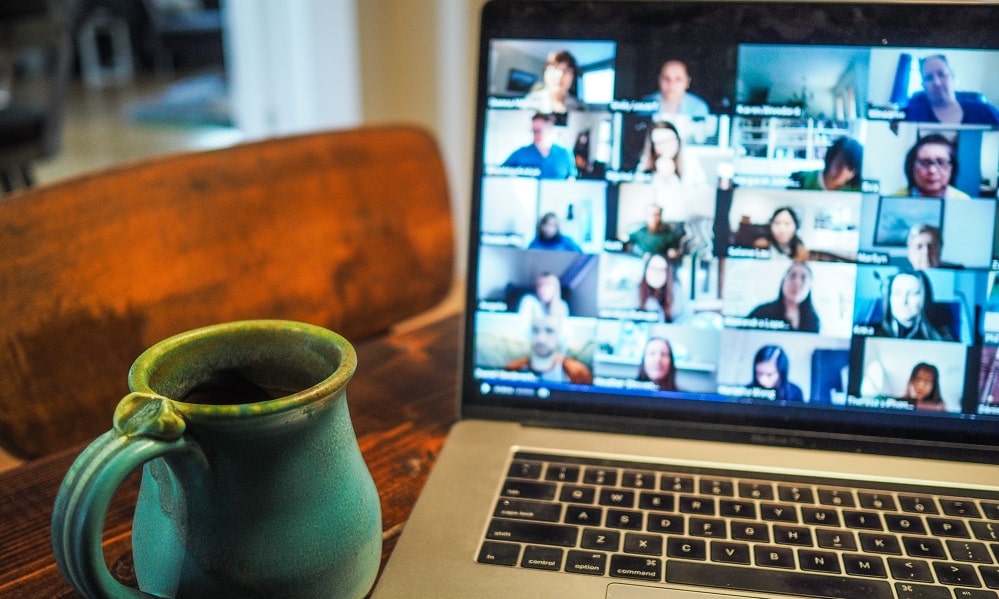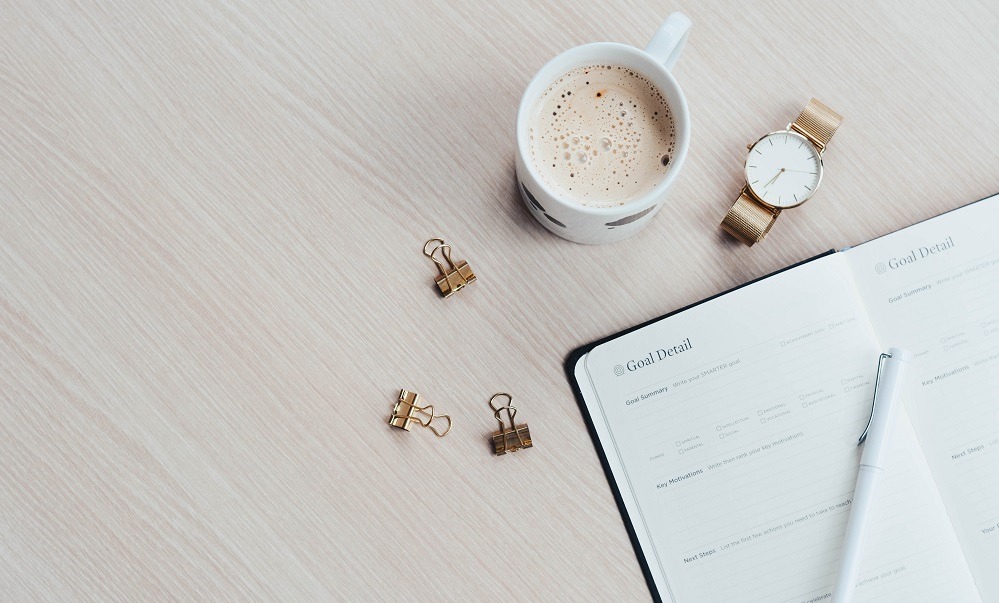Remote work :
how to manage your daily routine?
Over the past few years, remote work has emerged as the new normal for many professionals.
Initially seen as a temporary solution, it has now been widely and permanently adopted by the majority of companies.
Flexibility, time savings, autonomy… Remote work offers many advantages. But it also comes with its own set of challenges.
Effectively managing your daily routine while working remotely requires true organization, personal discipline, and the right tools. From productivity and work-life balance to maintaining social connection, many factors come into play.
In this article, we offer a complete and structured approach to help you thrive in your remote work routine — whether you’re an employee, freelancer, or team manager.
Discover our tips, tools, and best practices to stay motivated, optimize your day, and take care of your well-being.

Organize your day like you’re at the office
One of the main pitfalls of remote work is losing your usual points of reference.
Without fixed hours or colleagues around, it’s easy to delay your wake-up time or stretch out your lunch break. But beware: without structure, productivity can quickly take a hit.
On the flip side, it’s just as important to avoid letting work spill over into your personal time. When working remotely, the line between professional and personal life can easily become blurred.
Set clear working hours
To maintain a good rhythm, start by setting regular working hours.
This helps your brain switch into “work mode” at specific times of the day. Ideally:
- Start your day at the same time as if you were going to the office.
- Take breaks at regular intervals (morning, lunch, afternoon).
- Log off at a set time to clearly mark the end of your workday. This consistency also improves communication with your colleagues — they know when you’re available and when you’re not.
- Establish a real disconnecting routine. Resist the urge to “just finish that last file” after 7 p.m. or reply to an email late in the evening.
Give yourself time off to truly recharge and protect your personal life.

Keep your usual morning routine
Take a shower, get dressed (even if it’s simple), have your coffee… These small rituals help your brain mentally prepare for a workday.
Even if you’re not leaving your home, try to avoid working in your pajamas!
Practice time blocking
Time blocking consists of scheduling each task or type of activity into specific time slots. This allows you to:
- Increase your focus
- Reduce interruptions
- Prioritize what really matters
Create a dedicated workspace
The work environment plays a crucial role in concentration and productivity.
It’s not about having a huge or ultra-modern desk, but about setting up a specific space that is conducive to work.
A clearly designated work area

Even in a small home, it’s essential to separate your personal space from your professional space. A tidy corner of a table, a comfortable chair, and good lighting are enough to create a productive environment.
If possible, avoid working from your bed or sofa, as these are associated with rest. Blurring the lines between relaxation and work can make it harder to focus — and to switch off.
The right equipment
Investing in the right equipment is a strategic choice for both comfort and efficiency:
- A second monitor if you work with multiple windows
- An ergonomic mouse
- A comfortable keyboard
- A quality headset if you often attend virtual meetings
Efficient task management
When working remotely, no one is there to remind you of your deadlines. That’s why it’s essential to be able to organize yourself independently.
Use a project management tool
Acollab, for example, is a collaborative platform that allows you to:
- Plan your tasks
- Assign tasks with deadlines
- Track team projects
- Share documents
- Communicate in real time via messaging or comments
Thanks to a clear overview of your goals and deadlines, you can better prioritize and anticipate your workload. The platform offers multiple ways to visualize task progress, including:
- Tables, organized by objective
- Columns, sorted by task status
- Gantt charts, a favorite tool in project management
- Calendar view, to see your tasks laid out in a schedule format

Prioritize with the Eisenhower Method
Not all tasks have the same value. The Eisenhower Matrix helps you sort your activities into four categories:
- Urgent and important – do it immediately.
- Important but not urgent – schedule it.
- Urgent but not important – delegate it
- Neither urgent nor important – eliminate it.
This kind of sorting is especially useful when working remotely, where mental overload can build up quickly.

Maintain communication with the team
One of the biggest challenges of remote work is loneliness. Not seeing your colleagues every day can lead to feelings of isolation, and even disengagement.
To prevent this, communication is key.
Increase the touchpoints
Even when working remotely, maintain your connection with colleagues:
- Schedule regular meetings (weekly meetings are recommended).
- Use instant messaging tools.
- Hold informal meetings or “virtual coffee breaks” to keep team spirit alive.
Set clear goals
When working remotely, misunderstandings happen more often. To avoid confusion:
- Clearly state your expectations.
- Specify deadlines.
- Regularly check the progress of projects.
Tools like Acollab make this transparency easier by centralizing communications and documents, and keeping a record of everything.

Balance work and personal life
When working from home, it’s easy to blur the lines between the two spheres. However, maintaining a clear boundary is essential to preserve your well-being.
Learn to close the door
If you have a separate office, close the door at the end of the day. If not, put away your computer and turn off notifications. This sends a signal to your brain: the workday is over.
Respect your personal time
Avoid responding to work emails after 7 p.m. Instead, resume personal activities in the evening: exercise, reading, cooking, playing with your children…
Maintaining a good balance is essential to prevent long-term professional burnout.
Cultivate motivation and focus

Without colleagues or a formal physical setting, motivation can wane. Fortunately, there are simple techniques to stay engaged and focused.
Use the Pomodoro Technique
Work in 25-minute intervals, followed by 5-minute breaks. After four cycles, take a longer break (15 to 30 minutes). This rhythm helps maintain a good level of focus without fatigue.
Visualize your progress
Use a tool like Acollab to track the progress of your tasks. This gives you a sense of accomplishment and boosts your motivation.
Surround yourself (even remotely)
Work together in a “silent video call” with a colleague if you prefer!
Maintain your physical and mental health
Remote work can lead to increased sedentary behavior, musculoskeletal disorders, and underlying stress. It is crucial to take a preventive approach.

Move regularly
Get up at least once every hour, walk around, stretch… Also include daily physical activity such as 30 minutes of walking, yoga, cycling, etc.
Take care of your sleep
Avoid screens before bedtime, keep a regular sleep schedule, and create a restful environment. Good sleep is a key factor in work performance.
Manage stress
Practice meditation, heart coherence exercises, or simply mindful breathing. Many free apps can help you with this, such as Petit Bambou and Respirelax.

Acollab, your ally in remote work
In this context, an all-in-one collaborative work tool quickly becomes essential. This is exactly what Acollab offers, developed by the French IT agency Akelio.
Here’s what you can do with Acollab:
- Create shared project spaces with your team.
- Assign tasks, set priorities, and track deadlines.
- Share files in a secure space.
- Communicate easily via internal messaging.
- Access your data anywhere, from a web browser.
Whether you are a freelancer, project manager, or part of a remote team, Acollab helps you centralize your work tools in a clear and intuitive interface.
Conclusion
Remote work can be a great opportunity for autonomy and flexibility… provided you master its codes. A well-structured day, smooth communication, the right tools like Acollab, and good lifestyle habits: these are all pillars to stay productive and calm while working remotely.
